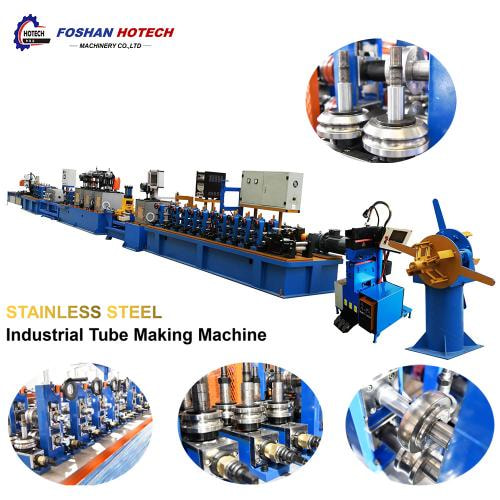Tube making has been an essential part of various industries for decades. These cylindrical structures find applications in sectors ranging from construction to automotive, making them indispensable. However, the process of creating tubes has witnessed a significant transformation with the advent of tube making machines. In this article, we will delve into the world of tube making machines, exploring their functionalities, advantages, and their role in modern manufacturing.

Before we dive into the intricacies of tube making machines, it's important to understand the evolution of tube production. Historically, creating tubes was a labor-intensive and time-consuming process, involving manual labor and considerable effort. This manual approach was not only slow but also prone to errors, resulting in inconsistencies in tube quality.
Tube making machines have changed the game. They are automated devices designed to efficiently produce tubes of various shapes and sizes. These machines have become the backbone of modern manufacturing, offering precision, speed, and consistency that manual methods cannot match.
A typical tube making machine comprises several crucial components. These include the decoiler, which unwinds the raw material, and the forming section, responsible for shaping the tube. The welding unit ensures a secure bond, and the cutting mechanism finalizes the tube's length. Together, these components streamline the entire production process.
There are various types of tube making machines, each suited for specific applications. These include ERW (Electric Resistance Welding) machines, TIG welding machines, and laser cutting machines, to name a few. The choice of machine depends on the type of tube and the materials being used.
Tube making machines operate with precision and efficiency. Raw materials, such as steel or aluminum strips, are fed into the machine. The machine then processes the material through a series of steps, including bending, welding, and cutting, to produce the desired tube.
The advantages of tube making machines are multifaceted. They offer improved production speed, enhanced precision, reduced material waste, and increased cost-efficiency. Additionally, they ensure that the tubes produced are consistent in quality and dimensions.
Tube making machines cater to a wide range of industries. They are used in the manufacturing of pipes, automotive exhaust systems, HVAC ducts, and even furniture. Their versatility makes them an integral part of many sectors.
These machines not only improve efficiency but also contribute to sustainability. Reduced material wastage and energy-efficient operations make them an eco-friendly choice for manufacturers.
While tube making machines offer many advantages, they also come with their own set of challenges. Maintenance and initial setup costs can be high. Manufacturers must also ensure that the machines are operated by trained personnel to avoid errors and accidents.
The future of tube making machines is promising. Advancements in automation, material handling, and quality control are continuously enhancing their capabilities. These machines will play a pivotal role in the ever-evolving manufacturing landscape.
I remember visiting a manufacturing facility that had recently adopted tube making machines. The speed and precision with which these machines produced tubes left a lasting impression on me. It was a testament to how technology is reshaping traditional industries.
How have tube making machines impacted your industry?
What are the key considerations when choosing a tube making machine?
Are there any unique applications of tube making machines that you've come across?
Research and identify the type of tube making machine that suits your industry's needs.
Invest in training for your staff to operate the machines effectively and safely.
Regularly maintain and service your tube making machines to ensure optimal performance.
In conclusion, tube making machines have revolutionized the manufacturing process, offering speed, precision, and sustainability. These machines have found applications in a wide array of industries and continue to shape the future of manufacturing. By understanding their workings and benefits, you can make informed decisions to enhance your production processes.
Comments
Please Join Us to post.
0